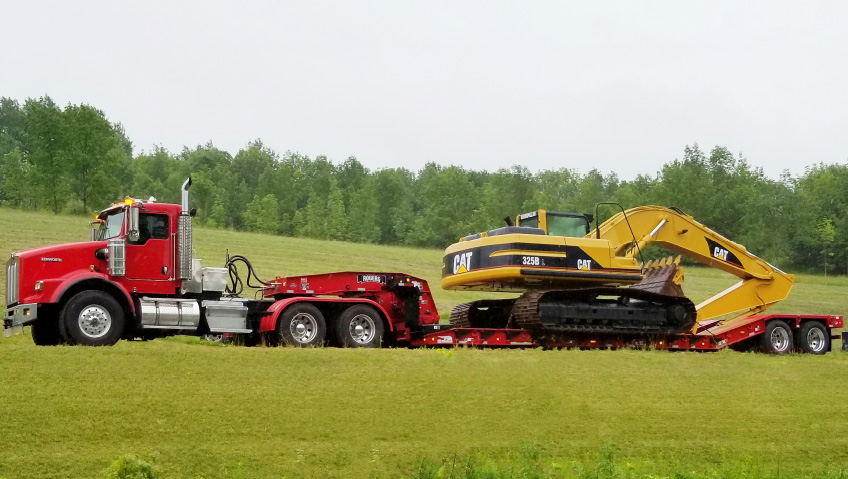It’s a potentially lucrative career path with ample room to learn and advance, but the manufacturing industry has consistently failed to attract women to its burgeoning ranks:
Although they make up 48 percent of the working population in Canada, women only comprise 28 percent of the manufacturing workforce, a statistic that has remained relatively constant for more than 30 years. In an industry that continues to grow and thrive, women have missed out on its numerous benefits such as stable employment with valuable and technologically advanced positions that pay well.
The stats are similar in the United States, as well, where women make up around 30 percent of the 15.8 million individuals in manufacturing industries, according to the U.S. Department of Commerce, but account for nearly 47 percent of the entire workforce, and only one out of every four manufacturing executives is a woman.
The demand for competent and talented professionals in the industrial business continues to be of paramount importance. According to recent Gallup research, more than two million skilled employees are needed in manufacturing industries such as aerospace and military, automotive, processing, and industrial products, while six out of ten roles are unfilled due to a skills deficit, according to the Women in Manufacturing 2017 survey by Deloitte, the Manufacturing Institute, and APICS.
What is the best way to rectify the situation?
Inspiring and motivating young women to enter this work space requires having more female role models, providing access to contemporary production facilities to help influence industry perceptions, encouraging initiatives for young women to seek STEM and/or skilled trades educations, creating more inclusive workplaces, and fostering innovative solutions to help achieve a healthier work-life balance.
The ongoing underrepresentation of women in manufacturing, coupled with the potential intimidation factor found in a traditionally male-dominated industry, poses a challenging barrier for women looking for a career in the field, along with those hoping to advance up the corporate ladder. Starting at the top and leading by example seems to be the most proactive way to generate change, while prioritizing diversity and inclusion (D&I) and embedding that practice in an organization’s mission can also help inspire long-term transformation.
Employers, too, face unique problems in attracting and hiring women to manufacturing jobs. But while traditional gender bias persists, diverse firms have proven tactics for bringing women to the workforce, particularly for those vital leadership positions. Having female executives as internal role models and visible on company websites during the recruitment process is an excellent place to start. Equal compensation for equal labour, coupled with flexible work schedules and mental wellness programs show employees their needs are important, while building female support networks foster stronger relationships and a sense of belonging. According to Gartner research published in August 2020, these benefits and efforts can increase feelings of inclusion by up to 38 percent.
However, women who work for firms that place an emphasis on being present and available at all times can be at a disadvantage when it comes to balancing this potentially damaging culture with the responsibilities of home and childcare. And those returning to full-time work following maternity leave may find a company’s onboarding and integration procedure severely lacking. Industries must be vigilant in helping to establish appropriate boundaries, workload delegation, and time management support, tasks often left to female employees to negotiate. Prioritizing an employee’s health and well-being can be aided by raising awareness at the executive level. A small move like offering a health coach as part of employee personal development can go a long way in improving well-being while also enhancing loyalty.
Gender diversity increases manufacturing businesses’ innovation, return on equity, and profitability, according to a Deloitte study of 600 women and 20 executives in manufacturing. Additionally, manufacturing employees report greater business performance in terms of ability to innovate when they see their employers making an attempt to include them.
Unfortunately, a number of studies have also revealed distressing tales of what it’s like to be a female worker in manufacturing, including multiple instances of sexual harassment and hostile and dangerous working conditions. According to a recent Forbes story, these incidents are underreported in the sector by both victims and coworkers who see them, factors that help shape the negative public perception of manufacturing. A Deloitte study found that women left manufacturing for a number of reasons including unappealing pay/income, not enough opportunities for advancement, poor working conditions, inadequate work-life balance and a lack of demanding assignments.
According to a Gallup poll, the ability to do what they do best and work-life balance are significant workplace considerations for women, factors that manufacturing companies should learn before recruiting. Job flexibility, inclusion, workplace respect, and being appreciated for strengths are also all top influencers for women job seekers, according to Gallup data.
Additionally, only 15 percent of the women polled felt the sector was accommodating of family and personal commitments, with more than 40 percent of women either solely responsible for or equally bearing the burden of household tasks. Taking these factors into consideration would greatly aid companies in their quest to successfully diversify their workforce.
It’s also critical for manufacturers to communicate to female students early on that they embrace gender-inclusive ideals in their organizations. Only 29 percent of women believe the school system actively or somewhat supports female students to pursue manufacturing occupations, according to the Deloitte survey. A lack of knowledge about manufacturing’s potential and early recruiting may also be damaging the business.
In short, hiring more women in manufacturing positions demonstrates a gender-inclusive culture, which in turn attracts more women. Deloitte recommends that women executives in manufacturing businesses be more visible in order to demonstrate gender inclusivity to potential employees, while also emphasizing rewards, flexibility, and culture in order to recruit certified and qualified female candidates.
Current recruitment practices are another explanation for the gender imbalance in manufacturing. According to a LinkedIn survey, there is a gender prejudice among recruiters who are 13 percent less likely to check a female profile and three percent less likely to send women emails after viewing their profiles when looking at prospects on LinkedIn. Removing essential identifiers like names and images from candidate applications before analyzing them is one method to eliminate gender bias.
While identifying gender imbalance is an important first step, creating targets to close the gap is critical for any company aiming to draw more women as future employees. Women in leadership positions can provide a wealth of benefits according to the Deloitte survey, including a variety of viewpoints in decision-making, new and imaginative methods and solutions, a well-balanced organizational structure, and improved financial performance.
And of course encouraging professional development and providing opportunities for growth in order to increase the number of women in leadership positions is vital for manufacturing companies and the industry at large. Creating mentorship programs is also an ideal way to help aid in the retention of female employees.
Hiring competent women in manufacturing boasts numerous advantages: Along with boosting innovation, employee satisfaction, and sales, gender diversity businesses are more appealing to aspiring employees and job searchers. Attracting and keeping women in manufacturing is crucial to the future of manufacturing, providing a varied workforce that ensures there are different perspectives tackling problems in different ways.






